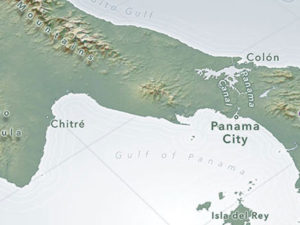If there was still doubt about the destructive character of climate change, the recent United Nations report, Climate Change and Land: An IPCC Special Report on Climate Change, Desertification, Land Degradation, Sustainable Land Management, Food Security, and Greenhouse Gas Fluxes in Terrestrial Ecosystems (2) makes clear that living beings around the globe will be in a world of hurt if we don’t respond with verve and ingenuity to the imminent crisis.
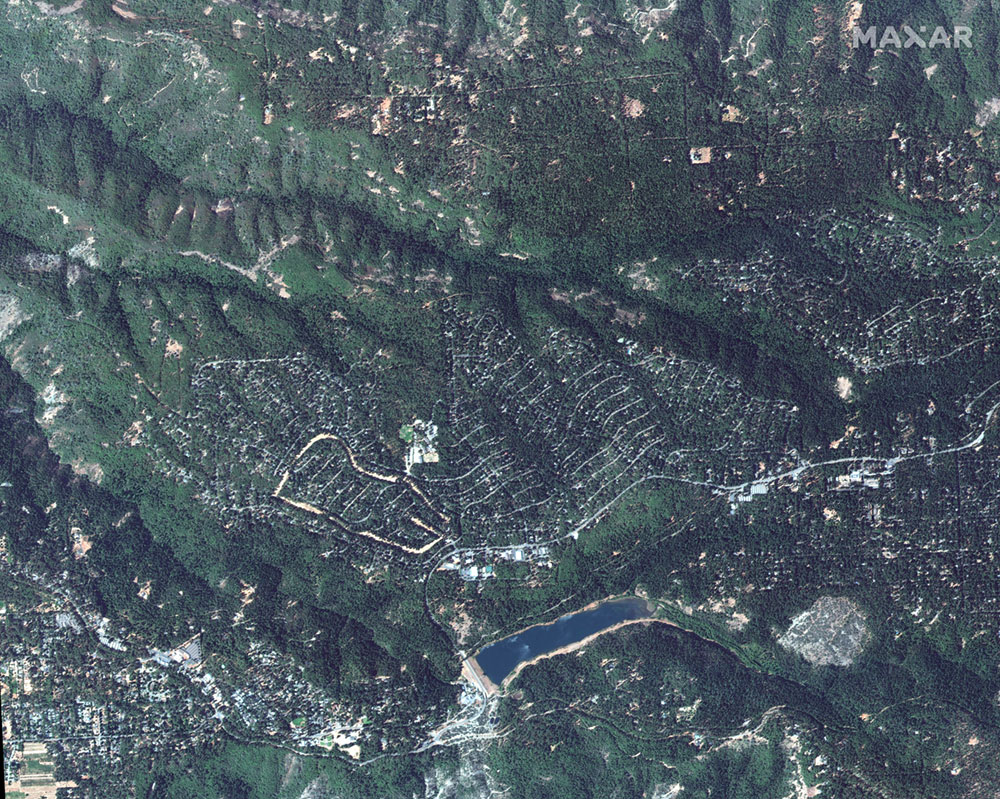
Figure 1: Paradise Pines, California pictured on Sept. 10, 2018, prior to the fires. Satellite image ©2019 Maxar Technologies.
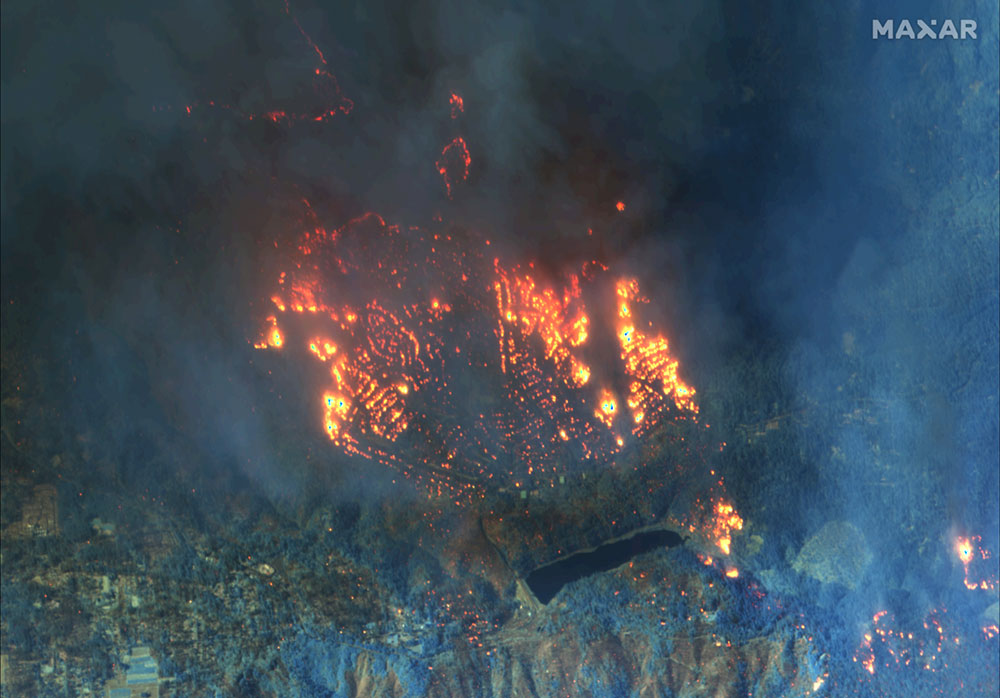
Figure 2: The Camp Fire in Paradise, California on Nov. 9, 2018, showing the town in flames via WorldView-3’s short-wave infrared sensor. Satellite image ©2019 Maxar Technologies.
The UN report emphasizes that no part of the world will be unaffected by the continuing effects of climate change. Although the three examples cited above are among some of the most dramatic warnings, highlighting human anguish and loss in vivid headlines and disturbing photos, the myriad less dramatic, slow-developing effects can be just as worrying and destructive over the long run.
Where I live in Southwestern Colorado, we see increasing periods of drought and the slow migration of species moving north. My wife and I recently experienced vivid evidence of species migration when a Roadrunner, a non-migratory bird endemic to the deserts of southern New Mexico and Arizona several hundred miles south, became caught in one of our fences. Fortunately, we were able to help it escape without damage and it quickly ran away. This was the second appearance of a Roadrunner on our property in two years, indicating a steady movement of the species northward.
Birds, mammals, reptiles, and fish can often move with changing conditions, but the trees cannot, so they tend to weaken and die out when the climate becomes too hot and dry, leading to loss of biodiversity. In our area of short piñon-juniper forests, the piñon trees are succumbing to the depredations of the bark beetle, which move in right along with the drought, and don’t freeze out with warmer temperatures.
We are now losing our own piñon trees at an alarming rate, primarily as a result of the continuing drought conditions. In the higher elevations to the north and east of our area, millions of Ponderosa trees have fallen victim to the combined assaults of bark beetle infestation and drought. These losses leave the area increasingly prone to damaging forest fires.
Elsewhere in the world, climate change is producing many disturbing alterations in the environment. As recently reported in The Guardian, the Hindu Kush-Himalayan ice sheet has lost 25 percent of its ice since 1970. The reason that such a loss is especially concerning is because this ice sheet is the third largest ice sheet, encompassing about 15 percent of the world’s total ice. The Guardian article calls this “the water tower of Asia,” supplying the water for 10 of the world’s largest rivers, including the Ganges and the Mekong. What will happen to those rivers, the lifeblood of millions of people of SE Asia, when this enormous ice sheet melts completely? Sadly, crucial data about the changes occurring in this enormous ice sheet and the downstream effects are very hard to come by, the result of secrecy and other restrictions on access to the glacier and country-specific hydrological data. (3,4)
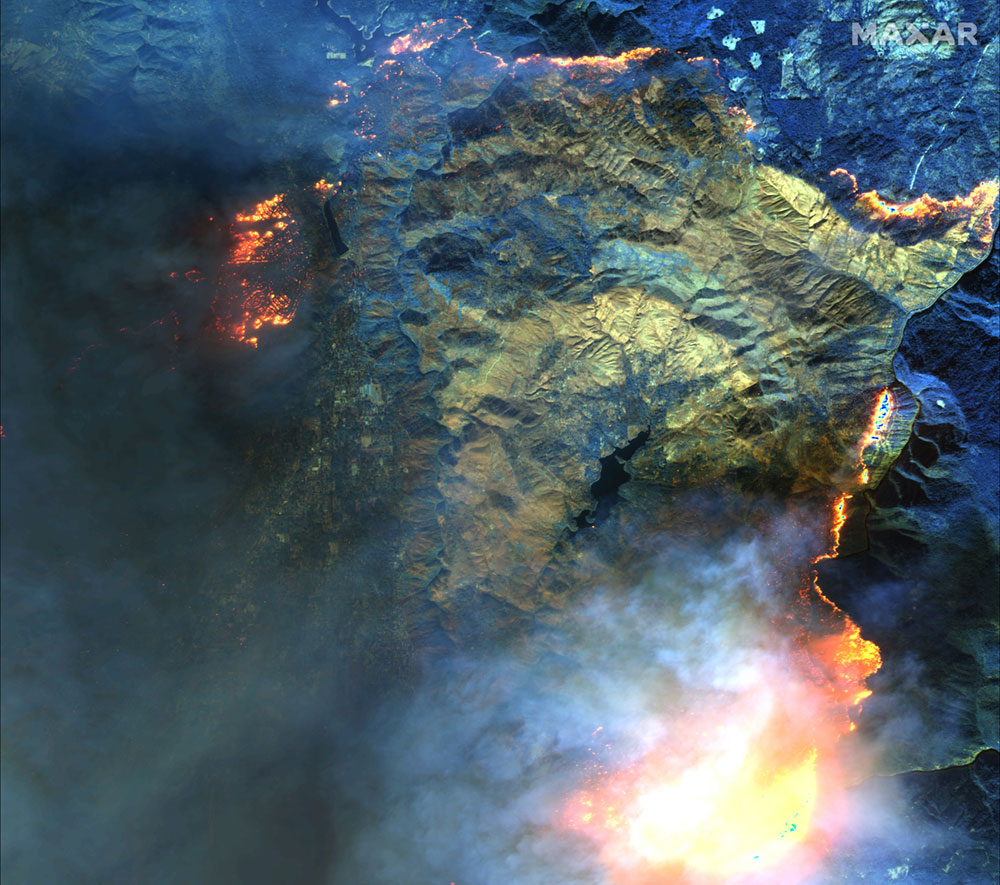
Figure 3: On overview of the fire, with the town shown in upper left corner (image is rotated), Nov. 9, 2018. Satellite image ©2019 Maxar Technologies.
Although the United States and most of the rest of the world have been slow to respond to the looming crisis, there is still much that can and must be done to: 1) limit the average rise in global temperature; and 2) mitigate damage to our economic and personal well-being as the effects of climate change become increasingly apparent.
Fortunately, Earth observations (EO) data collected from satellites, aircraft, and drones provide crucial information needed for tracking and combatting the effects of climate change. Beyond climate change, EO data can also alert scientists to environmental degradation caused by industrial farming, over-development, and other damaging environmental practices.
Although most of the advantages of EO are common knowledge to most of our readers, it is worth reviewing the key elements of these advantages:
- Synoptic view: Satellite images allow researchers to capture a large area at one time, permitting comparisons.
- Repeatability: The ability to capture imagery under similar observing conditions allows for the retrieval of long series of observations over time. Series of observations over weeks, months, and even many years are possible, allowing researchers to follow temporal changes closely. Landsat satellites, for example, have been operating since 1972, making possible long-term comparisons.
- Wide range of geographic scales available: From satellites to aircraft and drones, a wide variety of image coverage and resolution are available, allowing a range of scales from 10s of meters to sub-meter resolution.
- Wide range of temporal scales available: Using the multitude of both government and private sector satellites at different repeat cycles, as well as numerous EO aircraft now available, both slow and fast- changing conditions can be monitored with ease.
- Increased transparency compared to in-situ observations: For parts of the world that are closed to aircraft or drone operations, satellite systems offer an important way to gather environmental information.
The bottom line is that the information revolution, coupled with a wide-ranging mix of public and private data sources and specialized analytics software, enable detailed analysis of climate change and the effects it causes to the world’s varied environments.
We aren’t talking just about imagery, either. Numerous operational sensors are looking for harmful methane and other gases, and for broad-scale changes in land and ocean surface temperatures.
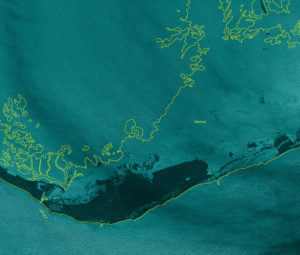
Figure 4: Image of the Bahamas underwater after Hurricane Dorian, Sept. 2, 2019. Synthetic Aperture Radar image courtesy of ICEYE.
Information derived from Earth observations data has another, underappreciated advantage over many other data collection methods. It often provides clear visual evidence of changes to Earth’s ecosystems over time, countering the stubborn resistance of so-called climate change deniers. Perhaps more important, such information counters the claims of what Nathaniel Stinnett at BuzzFeed term “climate liars,” – people who understand and accept the science of climate change but nevertheless deny it for political or narrow commercial motives.5
I don’t expect to convince climate deniers; they’ll always find a way to twist the facts to suit their closely held preconceptions. Even less do I expect to convince the climate liars, who have a political and/or financial stake in not publicly admitting the truth about climate change and its serious effects
on the environment. On the contrary, the goal is to demonstrate to as many people as possible in the middle that we face a climate change crisis. Earth observations can go a long way to do that, especially those who will be most affected by the environmental alterations wrought by climate change.
Finally, and perhaps most important in this political moment, Earth observation technologies allow us all to document the effects of climate change in detail and use that information to tell better, more accurate stories about how climate change will impact all our lives now and in the future.
As we go forward, Apogeo Spatial will focus more and more of its attention on how Earth observations can assist in documenting and combatting the worst effects of climate change.
Sincerely,
Ray Williamson, PhD, Editor
Endnotes:
- Climate change is coming for your wine. What the world’s wineries are doing to save grapes. https://www.usatoday.com/story/ news/nation/2019/09/08/climate-change- threatens-worlds-wineries-which-grapes- saved/2136457001/.
- Intergovernmental Panel on Climate Change Report: Climate Change and Land, Summary for Policymakers: https://www.ipcc.ch/site/assets/ uploads/2019/08/Edited-SPM_Approved_ Microsite_FINAL.pdf.
- The world has a third pole – and it’s melting quickly: https://www.theguardian.com/ environment/2019/sep/15/tibetan-plateau- glacier-melt-ipcc-report-third-pole.
- Changing climate imperils global food and water supplies, new U.N. study finds: https://www.washingtonpost.com/climate- environment/2019/08/08/solving-climate- change-requires-fixing-forests-food-landmark- un-report-finds/.
- Climate deniers and climate liars: https://www.buzzfeednews.com/article/ nathanielstinnett/climate-deniers-and- climate-liars.





